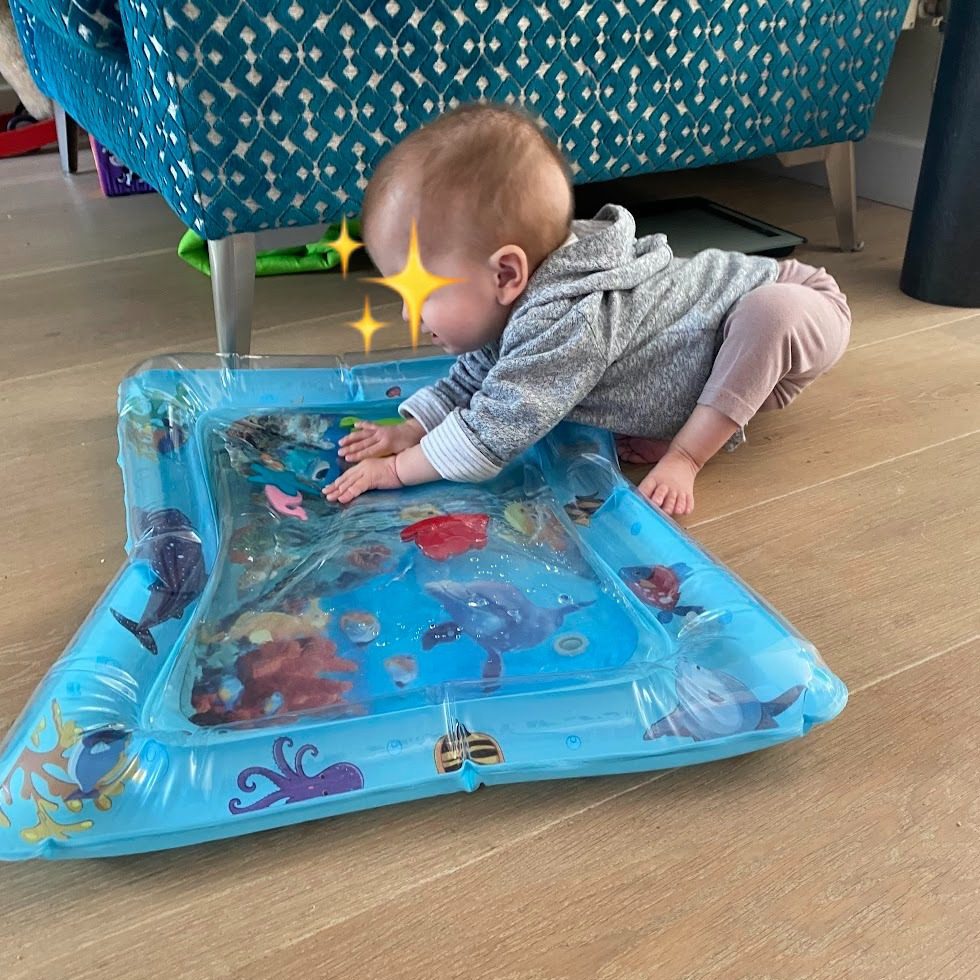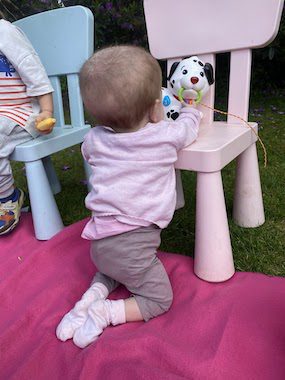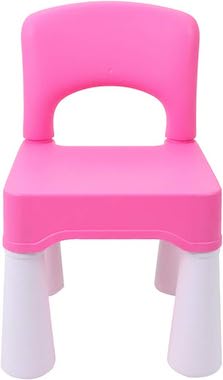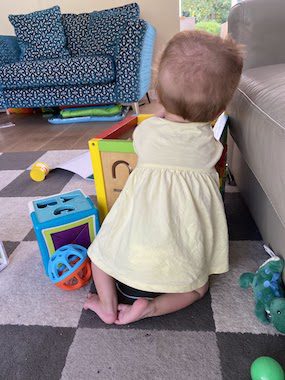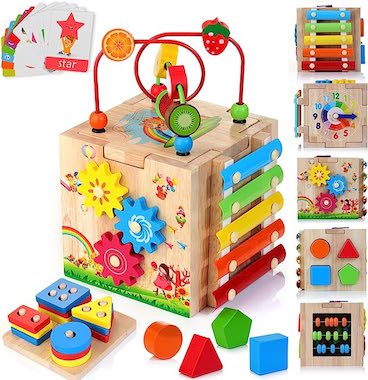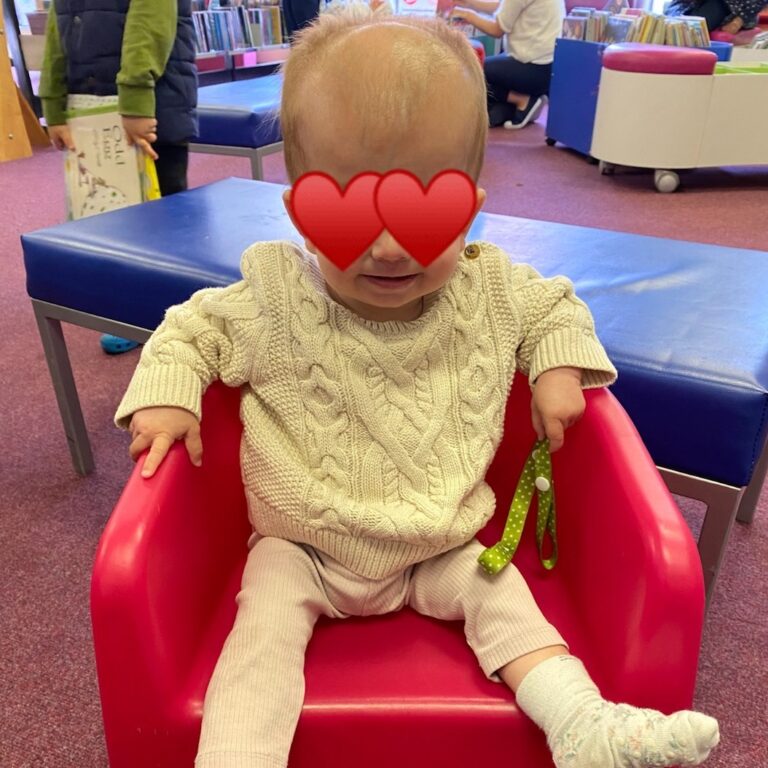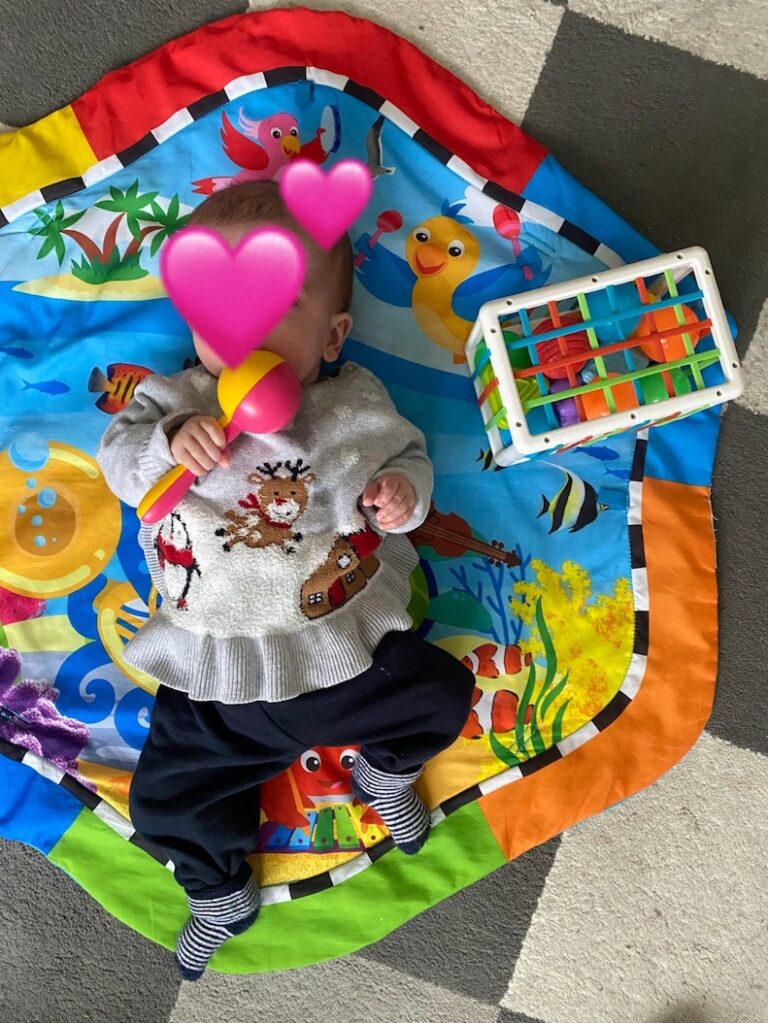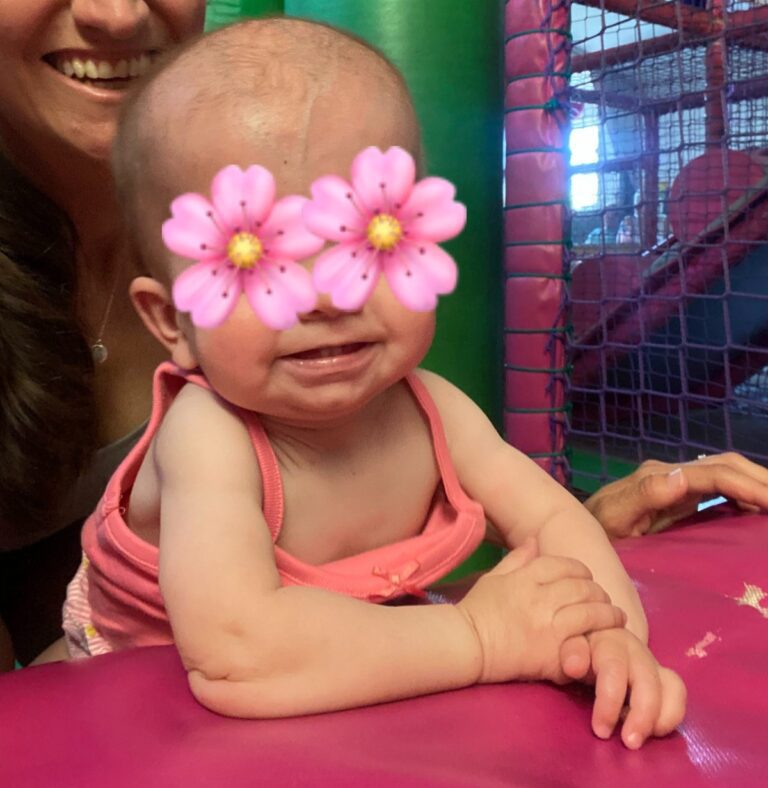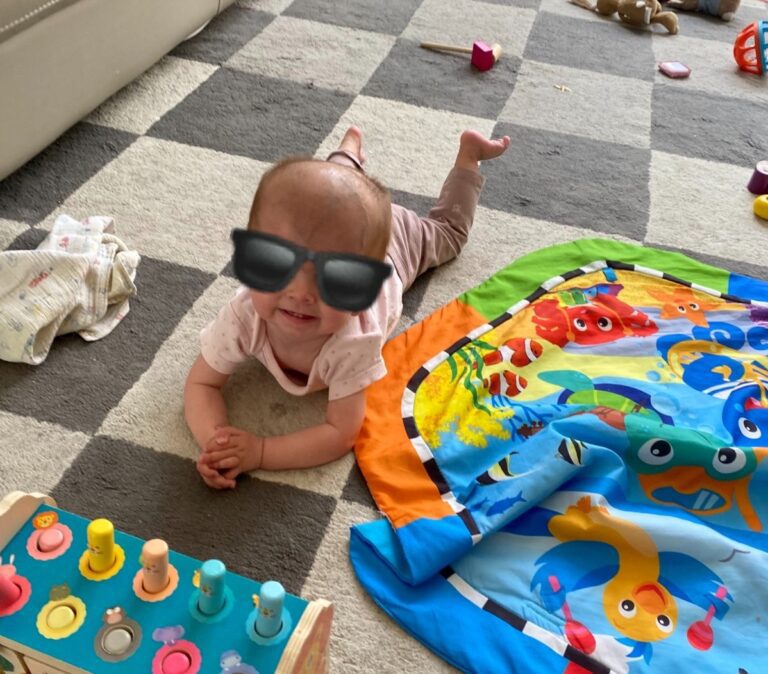Crawling is an important milestone in a baby’s development, and it serves as a foundation for various other milestones and skills. Some babies never crawl and they bum shuffle or directly walk instead. Anna might be one of them, but as crawling is so relevant, we continue on practising. In this post I wanted to share some exercises to help baby crawl that we do with Anna in physiotherapy.
Here are some of the reasons why crawling is key.
- Motor skills: Crawling helps develop and refine a range of motor skills, including gross and fine motor skills. As babies crawl, they strengthen their muscles, improve coordination, and enhance their overall motor control.
- Balance and coordination: Crawling requires babies to coordinate movements between their arms, legs, and trunk. This coordination helps improve their overall balance and spatial awareness.
- Visual and spatial skills: Crawling allows babies to explore their surroundings from a different perspective. It helps them develop depth perception, visual tracking, and spatial awareness as they move around, navigate obstacles, and reach for objects. Crawling also helps babies understand distance, spatial relationships, and their own body’s position in relation to the environment.
As Anna mastered her sitting balance, we started to practice different positions that would establish the basis of crawling. I will divide the exercises in 3 types.
1. From sitting to crawling position
Of the actitivies in this group, Anna was happy with the first 2 but disliked the last one. She found hard any position that required propping with both hands. The toys mentioned in the Sit and play, baby! post and these sensory balls were very good to do the exercises.
Sitting balance with Anna between my legs
Whilst having Anna sitting between my legs, I would block one of her hands on her legs or the floor as she uses it to prop. At the same time I would encourage her to reach across her body with the other arm for a toy.
This video shows the exercise. It is part of a playlist of exercises for children with low muscle tone. The channel was recommended by Anna’s physiotherapist.
Seated reaching activities
Whilst Anna is sitting on her own, I would place toys around her so she tries to reach them. It is better to put the toys next to her and not in front so she will reach to the side. Also it is important to encourage her to prop and reach across her body. In other words, to reach the toy with the hand in the side opposite where the toy is. This is very similar to the previous exercise but without having her between my legs.
Side sitting practice with ‘propping through hands’
I hope that the title with the image below are self-explanatory. This was hard work for Anna, so the recommendation from her physiotherapist was to just do it for 10 to 15 seconds, and then allow Anna to return to sitting. The point was to practise this in both direction. The problem was that Anna many times refused to allow us to “put her” in that position.
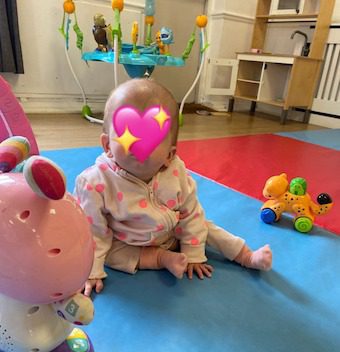

2. From tummy to crawling
I found really hard to get Anna to practice any of the positions in this group. Anything close to tummy time was still a struggle for her at the time. The best help to get here to do these exercises were the toys mentioned in the tummy time post.
Tummy time with legs
Adding legs in the title because their role here is the main difference with tummy time and these positions. The idea was for me to place my hands against her feet so she could push against them and mimick a commando crawl movement.
Supporting Anna in a crawling position
Supporting her with her knees between my knees and a hand under her chest, whilst encouraging her to weigh bear through her hands.
This is another video from the PT recommended by Anna’s physiotherapist where you can see the exercise.
3. High kneeling
High kneeling serves as a transitional position between sitting and crawling. It helps babies develop the necessary strength, stability, and coordination to progress towards a hands-and-knees crawling position. By practicing weight-shifting, engaging core muscles, and developing balance, kids gradually build the foundational skills needed for crawling.
Anna loved high kneeling and she soon showed interest in getting into high kneel by herself.
Initially she would high kneel between my knees in front of the sofa or a baby chair or a toy. The reason why I would have her between my legs was to help her keep the position as long as possible. As she has hypermobility, she tends to like to sit in W position. That is the position she would naturally end up in when she got tired from high kneeling.
Toys that encouraged her to play high kneeling
A kids chair is the perfect size for high kneeling. I used to put on top of it this VTech pull along puppy that was one of her favourite toys.
A wooden activity cube is great to practice high kneeling. Anna loves hers (still plays with it). She would play with the toys on top, or if it was open, she would try to reach the toys inside. It is also really good to start practising to go from kneeling to standing.
Crawling is hard work for some babies. Somebody told me that 2% of kids never crawl. Not sure if the statistic is right, but I can see that most children end up crawling. Even though it looks like Anna is going to be a bum shuffler, we continue practising these exercises to help baby crawl. I will let you know how she does!
